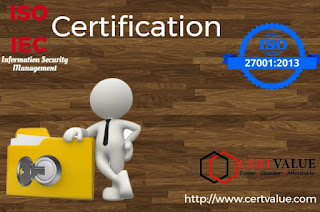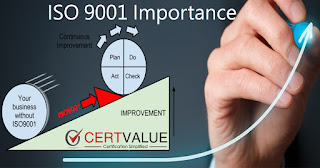ISO 27001 HOW TO PRIORITIZE SECURITY INVESTMENT THROUGH RISK QUANTIFICATIN
ISO27001 Certification in this situation is similar to managing
investments in security, where the juggler is the organization, the rotating
objects are the risks, and the action of rotating them refers to the resources
invested. By understanding the rotating dishes situation, the equivalent of
analyzing the risks, the juggler can decide on the order in which he needs to
work on them, and the necessary speed to apply to each one of them, so none of
them fall (i.e., the risks do not occur).
Benefits
of security investment prioritization
ISO
27001 Certification services in Bangalore The juggler does
not need to keep all the objects rotating at the same speed at the same time to
keep them from falling. If he did that, he would soon become tired from the
effort and would no longer be able to act, and the objects would start to fall.
This
first analogy leads us to some of the benefits of security investment prioritization:
·
More
efficient allocation of people, processes, and budget:
prioritization helps organizations to invest only the needed resources required
to handle risks – no more, no less.
·
Increased
focus around the risks that matter most: prioritization gives
employees guidance on what the organization sees as important.
·
Increased
success rate: with risks treated according to their
criticality, the chance of their occurrence is lessened, as well as their
chance of negatively impacting the organization’s objectives and expected
outcomes.
WHY
QUANTIFY RISK IS IMPORTANT:
ISO27001 Registration in Bangalore in the qualitative form,
risks are valued based on the perceptions of those analyzing them, and
perceptions can be biased, which makes it difficult to use them outside the
context in which they were analyzed. On the other hand, when we talk about risk
quantification, we mean defining the value of risk based on verifiable data and
calculations, and this is important because it allows verification. Returning
to our analogy, balancing objects on sticks is basically the application of
physics (the gyroscopic effect), which involves rotation speed and direction,
regardless of the object used. By analyzing both speed and direction of
objects.
HOW
TO QUANTIFY THE RISK:
The ISO definition for risk according to the ISO Guide
73, which defines the vocabulary for risk management, is: “the effect of
uncertainty on objectives.”
Considering that, the variables most used to quantify
risks are likelihood and impact. Normally, quantified risk is expressed in
monetary values, as it facilitates understanding of a specific risk by the
whole organization, and because it makes the evaluation of the required
security investment quicker.
OPTIMISE
RESOURCE ALLOCATION BY RISK QUANTIFICATION
ISO27001 Implementation in Bangalore Risk treatment is
organizations can’t postpone because customers and society are becoming less
and less accepting of those who do not treat risk properly. On the other hand,
the number of risks by far outweigh the available the resources of any
organization, so they need to search for way to wisely invest their resource.
the security investment is to be evaluated in the
short term, maybe there is no point in making big investments on higher risks
with a low probability of occurring, and it is better to ensure that higher-probability
risks are treated. If the security investment is to be evaluated in the long
term, the sum of losses due to the occurrence of lower risks, even with
implemented controls, may be acceptable, because preventing the higher risks
will increase market confidence in the business, thereby increasing revenue @certvalue.com.




Comments
Post a Comment